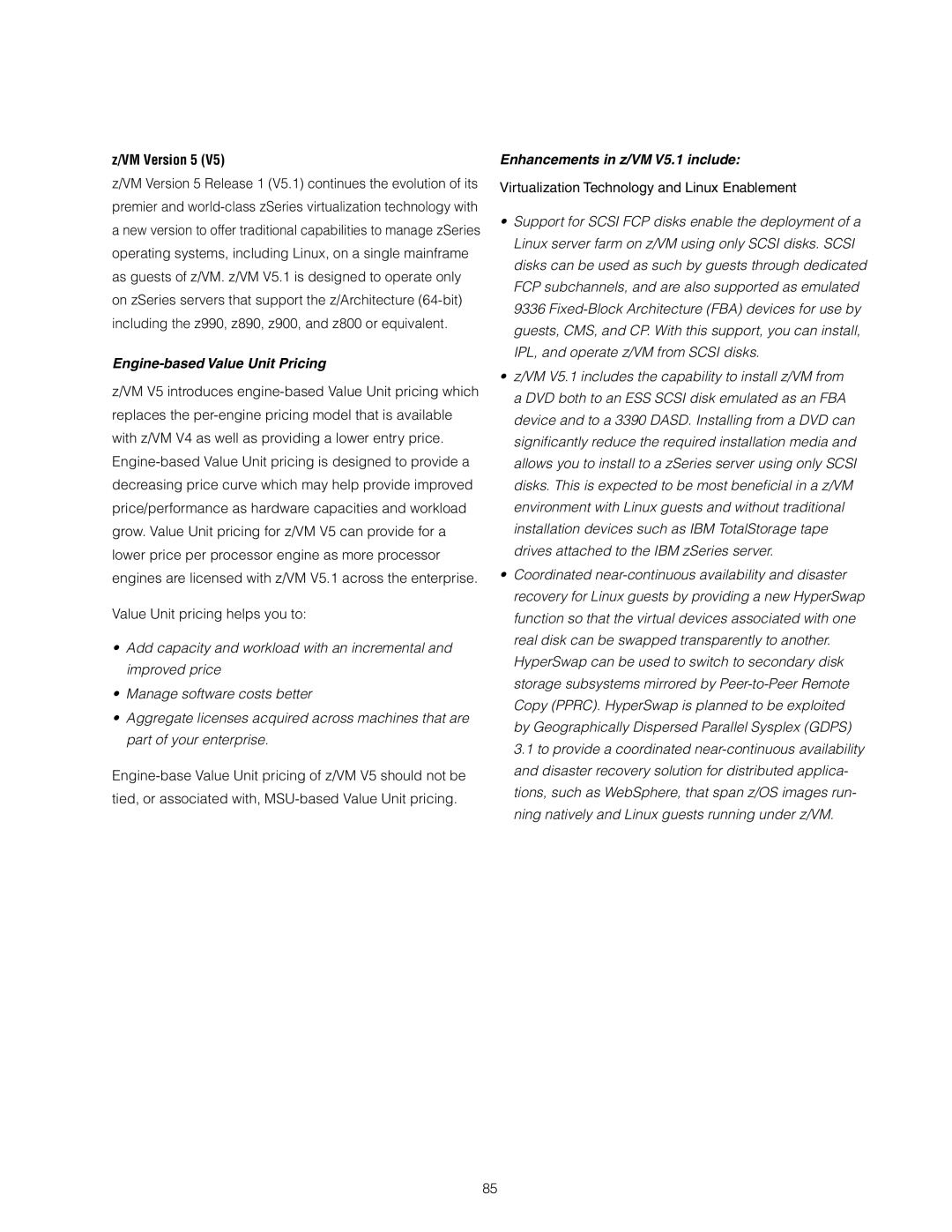z/VM Version 5 (V5)
z/VM Version 5 Release 1 (V5.1) continues the evolution of its premier and
Engine-based Value Unit Pricing
z/VM V5 introduces
Value Unit pricing helps you to:
•Add capacity and workload with an incremental and improved price
•Manage software costs better
•Aggregate licenses acquired across machines that are part of your enterprise.
Enhancements in z/VM V5.1 include:
Virtualization Technology and Linux Enablement
•Support for SCSI FCP disks enable the deployment of a Linux server farm on z/VM using only SCSI disks. SCSI disks can be used as such by guests through dedicated FCP subchannels, and are also supported as emulated 9336
•z/VM V5.1 includes the capability to install z/VM from a DVD both to an ESS SCSI disk emulated as an FBA device and to a 3390 DASD. Installing from a DVD can signifi cantly reduce the required installation media and allows you to install to a zSeries server using only SCSI disks. This is expected to be most benefi cial in a z/VM environment with Linux guests and without traditional installation devices such as IBM TotalStorage tape drives attached to the IBM zSeries server.
•Coordinated
85
